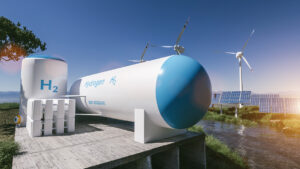Transformers are equipped with standard protections, but they still explode and lead to fire.This phenomenon is generally due to an internal short-circuit in the transformer. The short-circuit, created by an insulation failure, reaches 1,200-degree Celsius. It vaporizes the oil located in the transformer tank.
The oil, being in contact with very high temperature, vaporizes and creates explosive gases. Within milliseconds, it creates a Dynamic Pressure Peak traveling at the speed of 1,200 meters per second. The pressure propagation can be compared to a storm for which you hear the sounds after some time, while it propagates in the air.
Being in a closed area, the pressure wave will reflect off the transformer walls, coils and all other obstacles, leading to complex waves. These complex waves create a static pressure, which often reach 10 bars (150 psi). The transformer tank generally cannot withstand more than 1.2 bars (18 psi). With the pressure being constant in all the transformer, the transformer will rupture.
The explosive gases generated during the short-circuit will be in contact with oxygen and the oil contained in the transformer, which leads to an explosion and associated fire.The total sequence mentioned above happens in around 200 to 400 milliseconds, for which standard protections are not designed to react.




